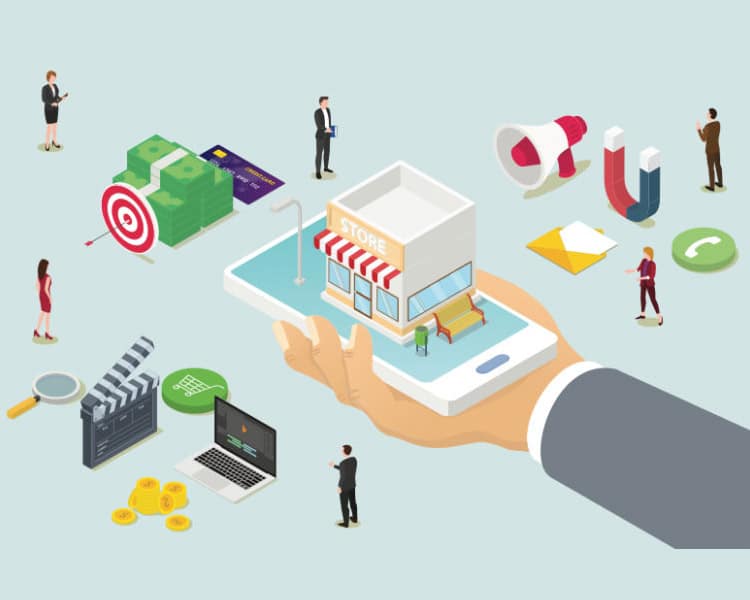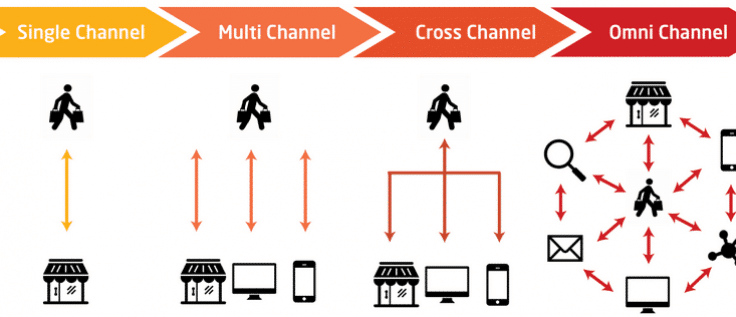The Omni-channel is a modern approach in the world of trade. It is a new way of selling and marketing that enables online and physical interaction between customer and seller. It is also suitable for businesses that sell both online and offline. In this post, you can learn about its benefits.
What are the features of this strategy?
How does Omni-channel work?
How does the Omni-channel retail work?
What does Omni-channel offer?

This strategy is about the true continuity of your experience. The workflow of this channel is inspired by our daily life. We face good and bad things in our lives. Then we try to limit the negatives and increase the good ones. The patterns we try to replicate are the things we prefer.
Similarly, in Omni-channel, the customers are allowed to have their own experiences. Then review them, draw conclusions, and make future decisions. In other word, it is the realization of a two-way balance in social trade.
How does it make a difference?
Today, the brands that can identify exactly what their customers want are winning. When exploring products within your brand domain, your data is transferred to the customer. In return she gives you access to her own data. This data is much more valuable.
In this way, Omni-channel integrates the world of websites, emails, targeted advertising, social media marketing and physical location marketing. To understand more, let’s read examples.
Omni-channel Retail
Omni-channel retail puts the customer at the core. The customer browses the site. Then she adds a treadmill to her cart. But she leaves the site without completing the payment process. Thus, to motivate her, BH Fitness offers a $100 discount service. It also shows ads for the same treadmill on Instagram, Facebook, Pinterest and YouTube for her. But after these actions for a week, it does not attract attention that is not liberating for the customer.
It then replays previews of the good and brand on YouTube. Finally, it invites her to interact. The customer enters the site. Selects the good. But after filling in the shipping information, she stops buying. Because she concludes that she should test the product before buying.
But the company has anticipated this. Now it realizes that she is located near one of its agencies. A few days later, she receives a physical invitation: “You can test this product in this shop.”
She finally goes there and buys it. She also uses the ES-equipped POS system when paying. They will send an email to her the same day, thanking for her purchase. But this is not the end.
Next week, she will receive advertisements about other products of this brand. And she may go to the site and research the good and buy it as a result. Therefore she is familiar with the site and may visit its other sections next time. You see? In Omni-channel strategy, customer behaviors determine the next steps. As a result, brand behavior is consistent with customer behavior.
Omni-channel Warehouses

Omni-channel logistics allows businesses to tailor how their products are purchased and delivered to suit customer needs. In this regard, distribution and realization centers must optimize their network in several areas. As a result, they can guarantee a positive experience for the consumer.
They should have:
- Fast sea freight and air freight
- Network speed
- Order recording
- Inventory visibility
In this regard, many companies have included some tools in their Omni-channel strategy such as WMS or OMS. Also WMS is very important in supply management strategy to maintain competition. Permanent knowledge of inventory and assets makes you manage the warehouse.
There are many successful companies that use this such as:
- Disney: This company gets its experience right, down to the smallest details.
- Oasis: It is a U.K. fashion retailer. If you walk into one of its stores, you’ll find sales associates. They give you up-to-date product information with an iPad. It also acts as a cash register.
Omni-channel FAQ's
Omni-channel is a modern approach to trade that enables online and physical interaction between customers and sellers. It allows businesses to sell both online and offline.
Omni-channel integrates different marketing channels such as websites, emails, targeted advertising, social media marketing, and physical location marketing, providing customers with a seamless shopping experience across all channels.
An Omni-channel strategy puts the customer at the center and offers a two-way balance in social trade. It also allows for personalized experiences, where customers can review their experiences and make future decisions based on them.
Omni-channel allows businesses to tailor how their products are purchased and delivered to suit customer needs, resulting in a positive experience for the consumer. It also allows for the integration of different marketing channels, which provides customers with a seamless shopping experience across all channels.
In Omni-channel retail, the customer can browse the site, add items to their cart, and receive personalized ads based on their previous actions. If they do not complete the payment process, businesses may use incentives such as discounts or previews of the product to motivate them. Businesses can also anticipate customer behavior and tailor their actions accordingly, such as inviting the customer to test the product in a physical store if they are nearby. Finally, businesses may continue to advertise to the customer even after they have made a purchase, leading to repeat business.
Successful Omni-channel logistics requires fast shipment options, network speed, order recording, and inventory visibility. Businesses may use tools such as warehouse management systems (WMS) or order management systems (OMS) to manage their supply chains effectively.
